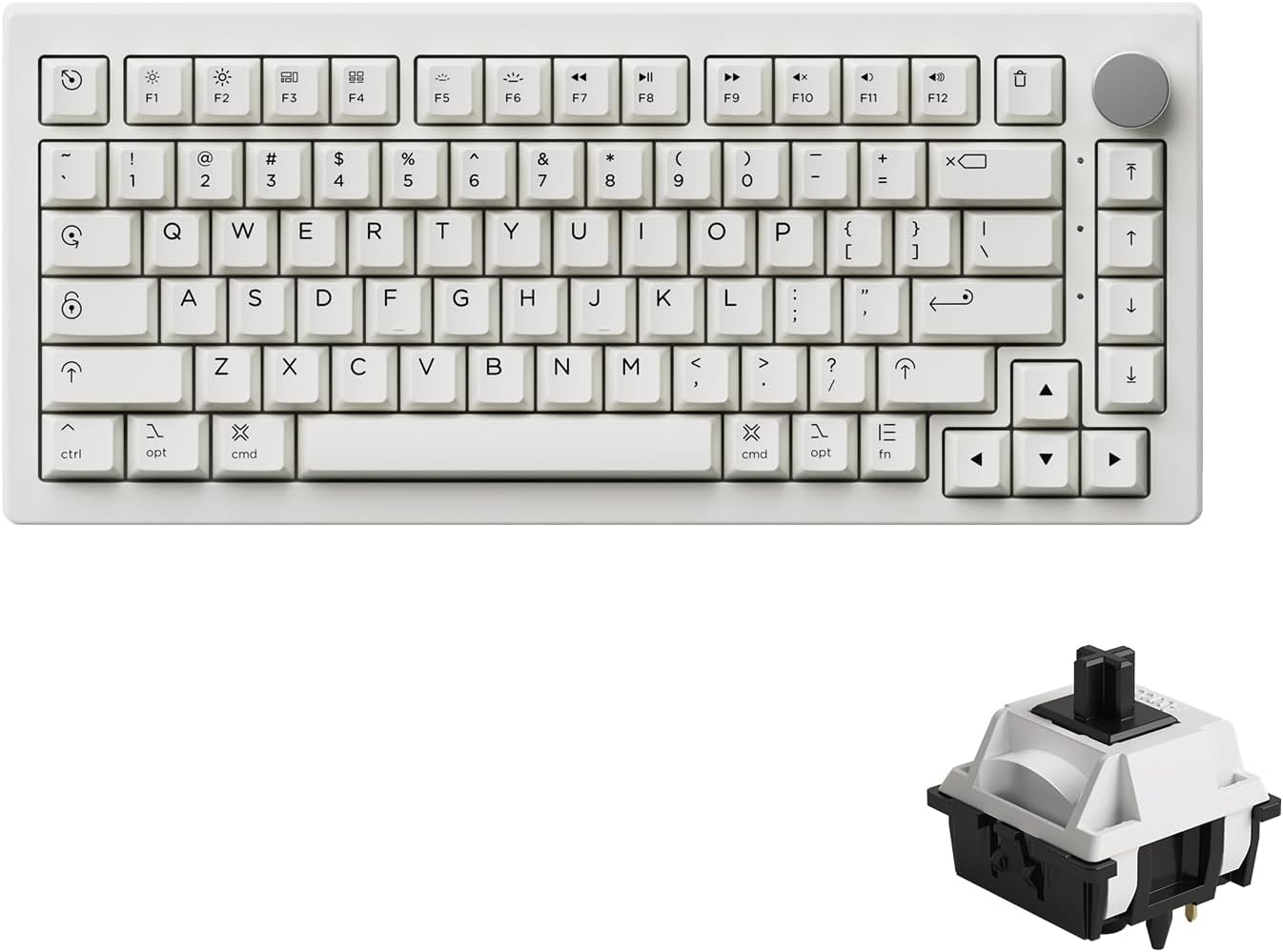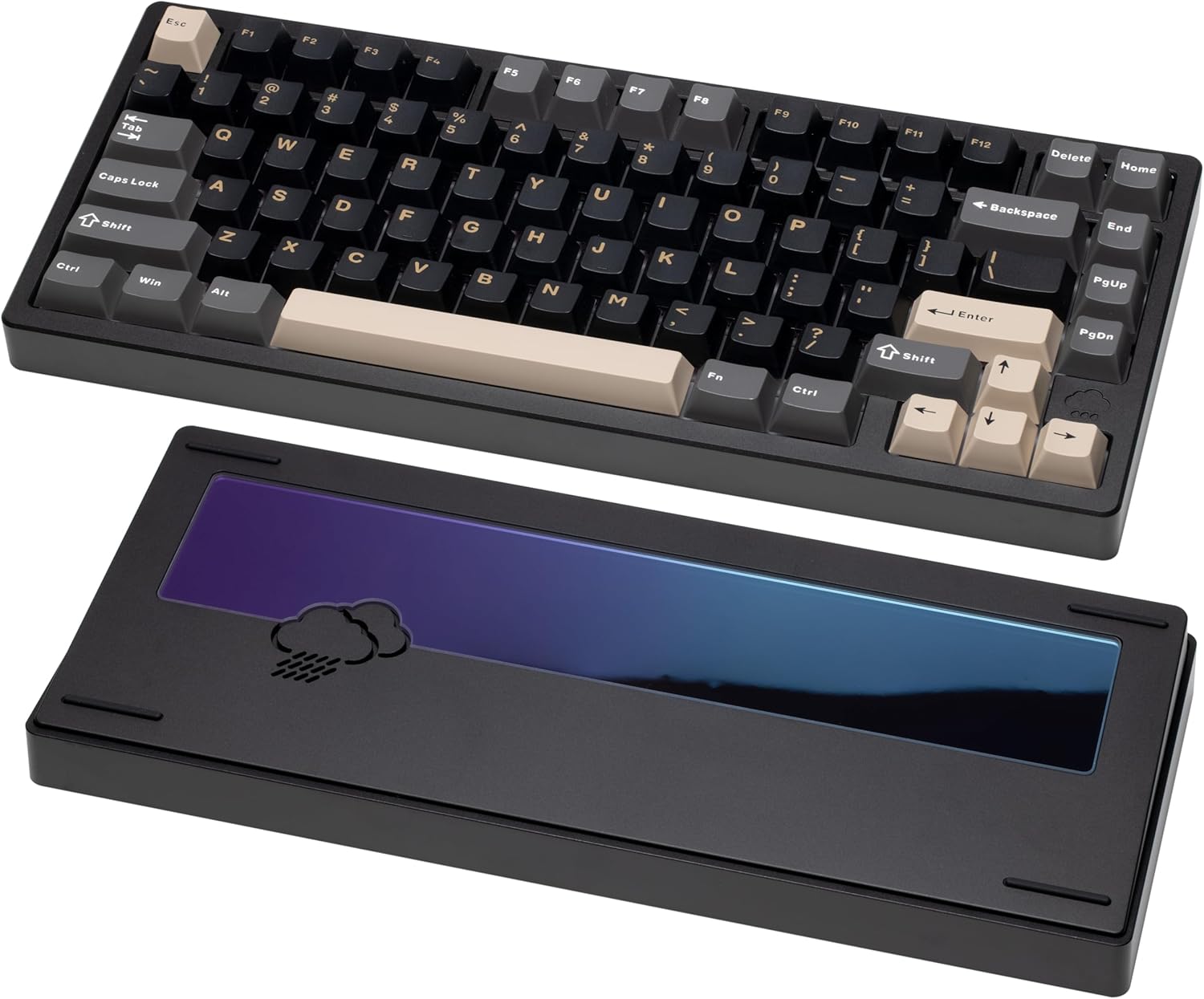Mechanical Keyboard Keycap Materials and Their Benefits
So, you're diving into the world of mechanical keyboards? Awesome! One of the first things you'll discover (and maybe obsess over) is keycaps. They're not just pretty faces; the material they're made from drastically affects the feel, sound, and longevity of your keyboard. Let's break down the most common types and explore some fantastic keyboards that showcase them.
ABS Keycaps: The Classic Choice
ABS (Acrylonitrile Butadiene Styrene) is a widely used plastic in keycap manufacturing. It's affordable, easy to mold, and offers vibrant colors. Many entry-level and even some higher-end keyboards come with ABS keycaps. But what are the pros and cons?
Pros:
- Affordable: Generally cheaper than other materials.
- Vibrant Colors: ABS can be easily dyed, leading to a wide range of color options and legends.
- Smooth Texture: Offers a smooth, sometimes even slightly glossy, feel.
Cons:
- Shine: Prone to developing a shiny appearance over time due to wear and finger oils.
- Less Durable: Not as resistant to wear and tear compared to other materials.
- Thinner Sound Profile: Can sometimes sound a bit "thinner" or "hollow" compared to thicker keycaps.
PBT Keycaps: The Enthusiast Favorite
PBT (Polybutylene Terephthalate) is considered the gold standard by many mechanical keyboard enthusiasts. It's a denser, more durable plastic with a slightly textured feel.
Pros:
- Durability: Highly resistant to wear, chemicals, and heat.
- Texture: Offers a textured feel that many find more comfortable and grippy.
- Shine Resistance: Less prone to shine compared to ABS.
- Deeper Sound Profile: Often produces a deeper, more satisfying sound.
Cons:
- More Expensive: Generally more expensive than ABS.
- Color Limitations: Can be more challenging to dye in certain colors.
Akko 5075B Plus Air: A Great Example of PBT Keycaps

If you're looking for a keyboard with excellent PBT keycaps, the Akko 5075B Plus Air is a fantastic choice. This keyboard features dye-sub PBT keycaps, known for their durability and resistance to fading. The Mac-themed design adds a unique touch, and the hot-swappable sockets allow you to easily change switches to customize your typing experience.
The Akko Cloud Driver also lets you customize the RGB backlight and the function of the rotary knob.
Other Keycap Materials
While ABS and PBT are the most common, other materials exist, each with its own unique properties:
- POM (Polyoxymethylene): Known for its smooth, almost slippery feel and high durability. Often used in higher-end custom keycap sets.
- Resin: Used for artisan keycaps, often featuring intricate designs and unique textures.
- Metal: Offers a premium look and feel, but can be expensive and may affect sound.
Keycap Profiles: Shaping Your Typing Experience
Beyond the material, the keycap profile also plays a significant role. The profile refers to the shape and height of the keycaps. Common profiles include:
- OEM: A sculpted profile, meaning each row has a different height and angle. Very common and comfortable for many users.
- Cherry: Similar to OEM but slightly shorter.
- DSA: A uniform profile, meaning all keycaps have the same height and angle. Can take some getting used to but offers a consistent feel.
- SA: A tall, sculpted profile known for its retro look and feel.
- XDA: A uniform profile with a larger surface area.
Which Material and Profile is Right for You?
The best keycap material and profile ultimately depend on your personal preferences and typing style. Here are some recommendations:
- For Gamers: PBT keycaps with a sculpted profile like OEM or Cherry can provide a comfortable and grippy experience.
- For Programmers: PBT or POM keycaps with a uniform profile like DSA or XDA can promote accuracy and consistency.
- For Budget-Conscious Users: ABS keycaps are a great starting point. Look for thicker ABS keycaps to minimize shine and improve sound.
- For Enthusiasts: Experiment with different materials and profiles to find your perfect match!
Keyboards with Great Keycaps: Some Recommendations
Let's look at some other keyboards that boast excellent keycaps:
Keychron K2 HE: High-Performance with Quality Keycaps

The Keychron K2 HE features double-shot PBT keycaps, which are known for their durability and resistance to shine. This keyboard is a high-performance option with Hall-Effect Gateron magnetic switches, offering a responsive and customizable typing experience. The combination of quality keycaps and advanced switch technology makes it a great choice for serious gamers and typists.
EPOMAKER EA75: A Budget-Friendly Option with Decent Keycaps

The EPOMAKER EA75 comes with ABS keycaps, which are decent for the price point. While they might not be as durable as PBT, they offer vibrant colors and a smooth texture. This keyboard is a great option if you're on a budget but still want a mechanical keyboard with a good typing experience. You can always upgrade the keycaps later!
AULA F99: A Feature-Packed Keyboard with Good Keycaps

The AULA F99 features PBT keycaps that contribute to its excellent sound and feel. Its gasket-mounted structure and five-layer sound dampening provide a soft and responsive typing experience. The hot-swappable switch sockets and vibrant per-key RGB lighting make it a versatile choice for both typists and gamers.
WOBKEY Rainy 75: Premium Typing Experience

The WOBKEY Rainy 75 is a minimalist mechanical keyboard built for a premium typing experience. It features high-quality keycaps (material not specified, but likely PBT or a similar durable plastic) to deliver a refined, customizable experience ideal for both work and play.
Final Thoughts
Choosing the right keycap material and profile is a crucial step in creating your ideal mechanical keyboard experience. Whether you prefer the affordability of ABS, the durability of PBT, or the unique feel of other materials, there's a keycap out there for you. Don't be afraid to experiment and find what works best for your typing style and preferences.
Ready to take your mechanical keyboard to the next level? Explore the keyboards mentioned in this guide and discover the perfect keycaps for your needs! And if you have any questions or experiences to share, leave a comment below!
Mechanical Keyboard Starter Guide
Ever wanted to learn about or build your own mechanical keyboard? This guide will show you everything you need to know.
Learn More